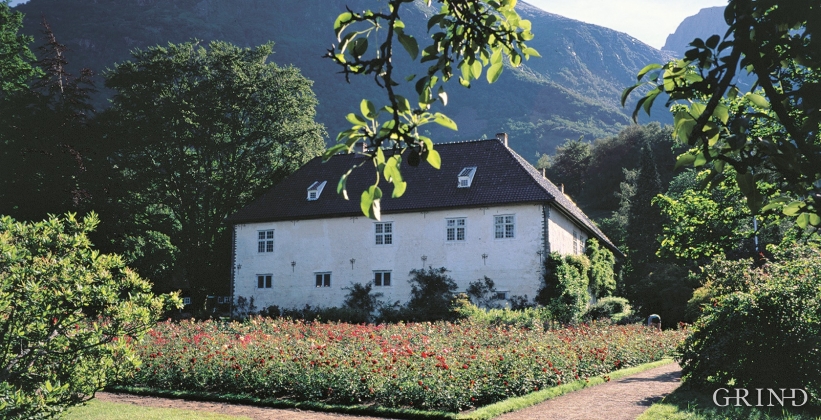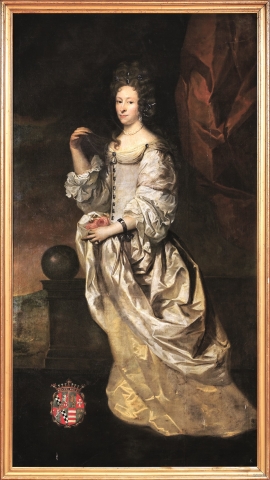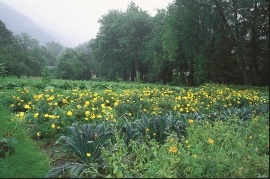Published: 10.01.2013 | Author: Nils Georg Brekke, Per Jahn Lavik, Anne Grete Honerød
The beautiful main building was probably built in the years 1660-65, after Ludvig Rosenkrantz had taken over the noble estate of Hatteberg. Karen and Ludvig received Hatteberg as a wedding present. This is where they built their magnificent stone-castle, a luxury dwelling by Norwegian standards. In the middle of the wall there is a grand baroque portal with the coats of arms for both the Mowat and the Rosenkrantz families and the inscription: “Melius Mori In Libertate Quam Vivere In Servitute” (“Better to die in liberty than live in slavery”). The top piece of the coat of arms has the inscription “WB.Ludwich Rosenkrantz Fr. Karren Movath”. A somewhat simpler portal frames the main entrance on the south wing on the opposite side with the inscription: “Wer Gott vertrawet hat wol Gebawet. Anno 1662”. The building is constructed in stone, with corners of steatite and portals of sandstone.
According to history part of the stone has supposedly been taken from the medieval farm chapel of Mel, and Scottish bricklayers are supposed to have executed the work. The sandstone portals on the other hand must have been cut by Danish or North German craftsmen and exported to Rosendal ready cut.
The hipped roof with the little swing at the base of the roof, formerly had the form of a steeper hipped roof without a swing, covered in red tiles as is apparent on the painting by Hans Sager from 1705.
The garden was probably worked up just after the main building was erected. In Sager’s painting we can see a fenced-in renaissance garden with a “garden house” to the west of the castle.
The landscape park was further designed in three stages from around 1850 to the 1870s. Southwest of the old garden the old houses on the farm Hatteberg were pulled down and trees and bushes were planted. Only the smithy is left standing at the entrance to the park.
At the next stage a romantic natural garden was designed, with dams and bridges, south of the main building. In the middle of the garden a small summerhouse was erected on a small rock.
The third stage was the design of the park east of the castle. In the 1870s a nature park was created here with beech trees and pine trees.
The interior is rich and with rare authenticity. Here are rooms with French textile wallpaper from the 1600s, empire furniture made in Bergen and a large collection with the main emphasis on national romanticism.
Master and servants
Master and servants. The families Hoff Rosenkrone and Weis Rosenkrone going on a trip with the ferryboat in 1890.
The kitchen garden at the Rosendal Barony awakens to a new life, after an extensive renovation based on the original garden from the 1600's.
- Hopstock, C. & Tschudi Madsen, S. (1965) Rosendal: baroni og bygning. Oslo, Universitetsforlaget.
- Tennfjord, F (1944) Stamhuset Rosendal. Oslo, Dybwad.











